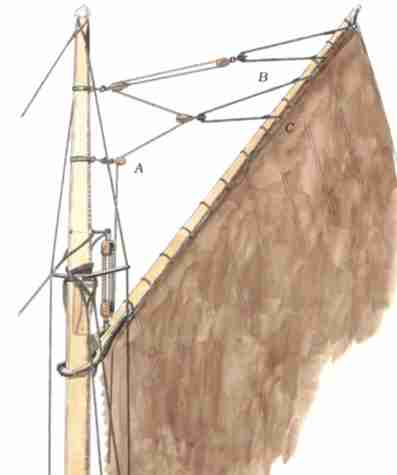The Mast
Revised 06/30/00
|
The Mast Revised 06/30/00 |
|
|
|
|
|
|
The mast itself is one of two distinct types, according to Hand Reef and Steer by Tom Cunliffe. A pole mast, as found on most small gaffers, or a mast carrying a fidded topmast. Historically, the gaffer mast has been of solid construction, without the concern about excess weight that racer-induced thinking has brought us. Either one can take a topsail, using a variety of ways to rig that Cunliffe details in the book. Not a strict traditionalist, Cunliffe mentions the advantages of reducing weight aloft if possible (but never in the boom.) My own solution to constructing a lighter weight, but still traditional looking mast, is to use the "bird's mouth method" of making a hollow, round mast. I detail my progress on my "Bird's Mouth Mast" page which will, eventually, show a finished mast! At least once I quit producing beautiful but bowed 12' failures!
The mast on a gaff rigged vessel is usually not tapered until "above the hounds" (or, above where the gaff reaches at its highest point.) This illustration from Tom Cunliffe's Hand Reef and Steer shows this arrangement. The reason is that the gaff jaws and mast hoops are sized to the diameter of the mast, and a compromise must then be made to balance the danger of binding near the deck if sizing the mast correctly at the top, against the danger of too much space between the sail and the mast at the top if sizing the mast for the bottom. Extra space between the sail and the mast can rob the sail of some power, and having the gaff jaws either bind or be extremely sloppy is not good.


|
|
|
|
|
|